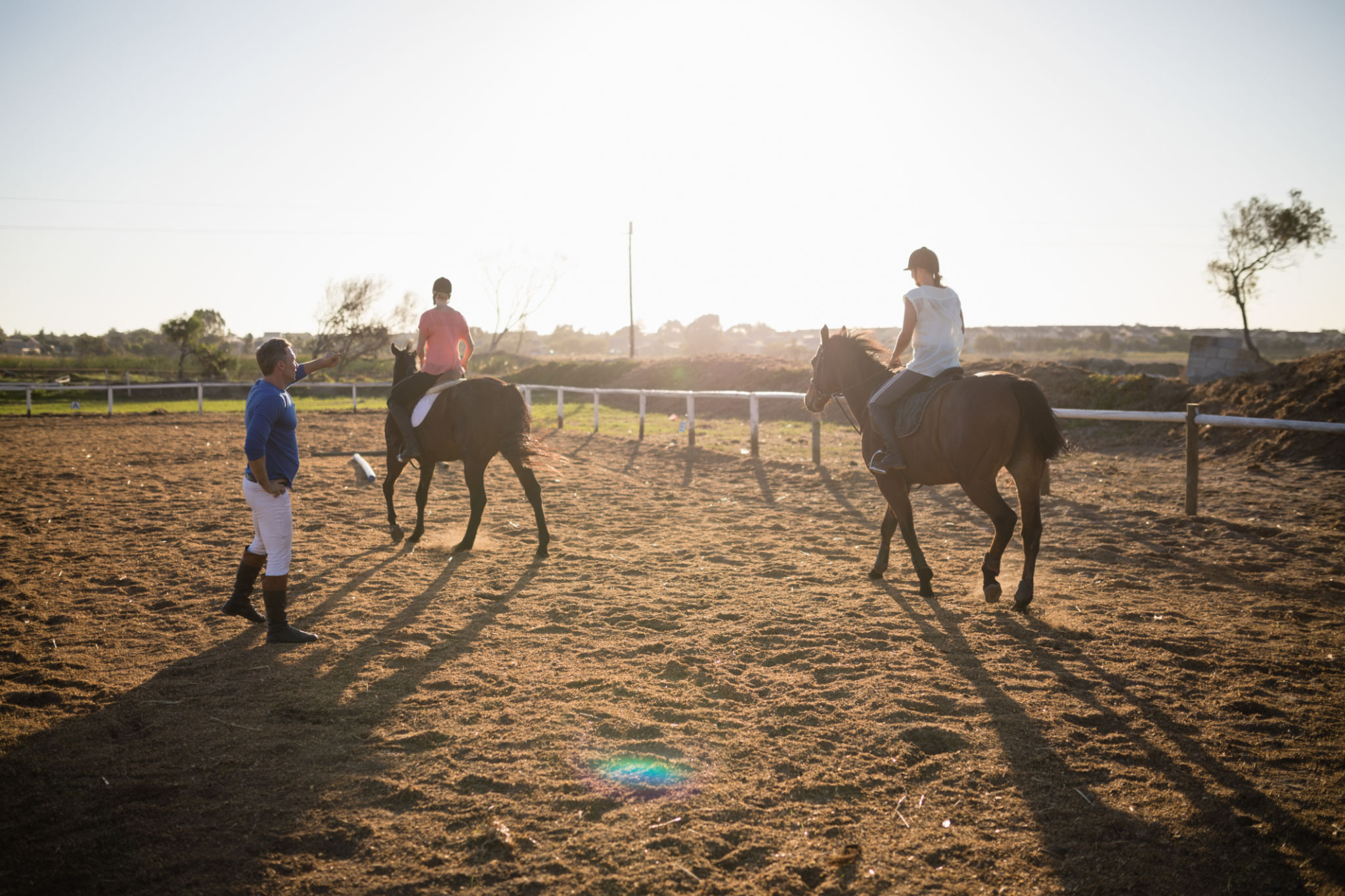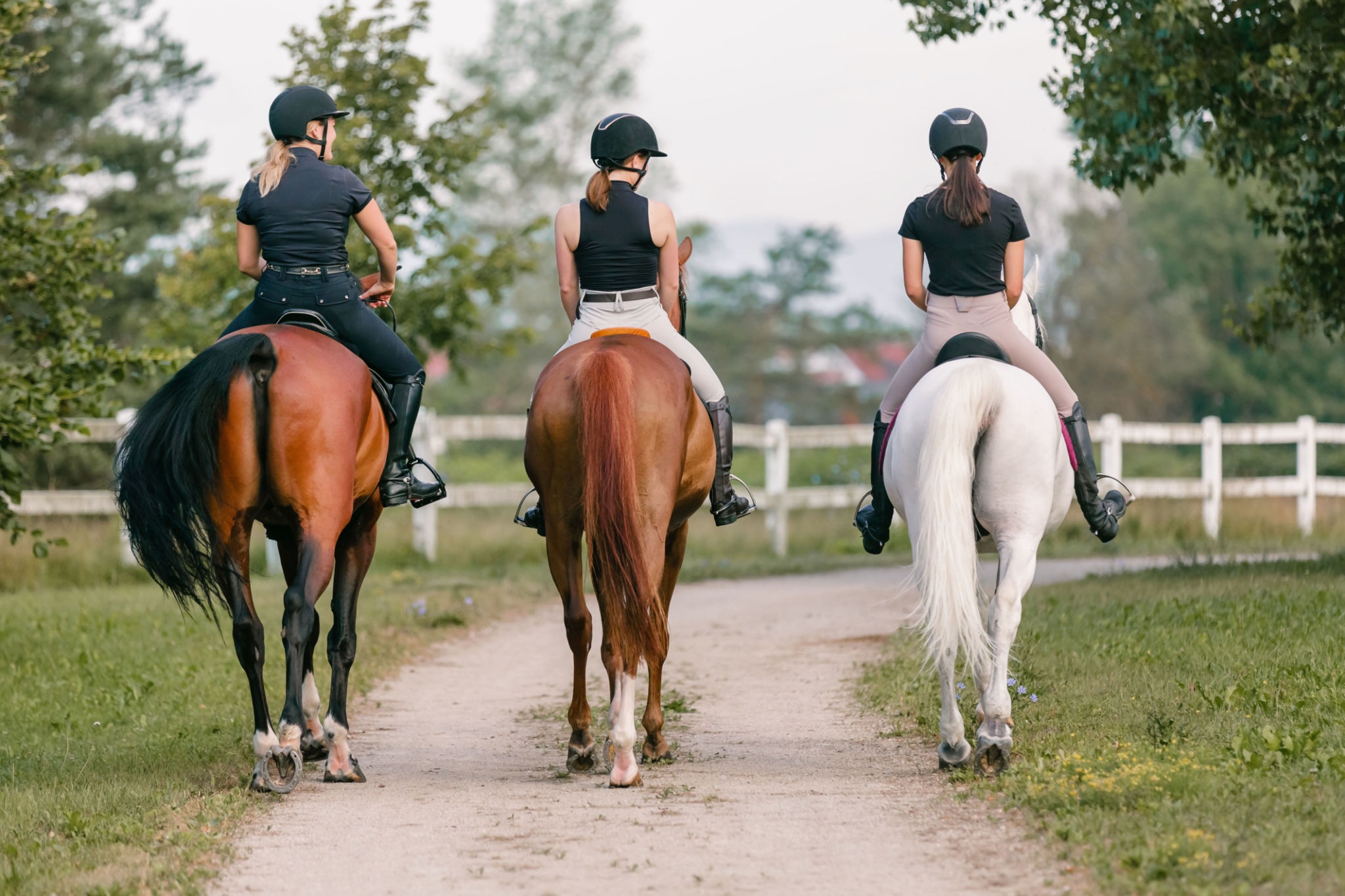Top 5 Tips for Beginners Taking Horseback Riding Lessons
Understanding the Basics
Embarking on the journey of horseback riding can be both exciting and daunting. As a beginner, it's essential to grasp the basics before diving into more advanced techniques. Horseback riding is not just about sitting on a horse; it requires understanding, patience, and practice.
One of the first things to learn is how to communicate effectively with your horse. Horses respond to subtle cues and body language, so developing a good rapport with your equine partner is crucial for a successful riding experience.

Choosing the Right Gear
Equipping yourself with the right gear is a critical step for any beginner. Proper attire not only enhances your comfort but also ensures your safety. A well-fitted helmet is a must-have to protect your head from potential falls.
Investing in a pair of riding boots with a heel can prevent your foot from slipping through the stirrup. Additionally, consider wearing gloves to improve your grip on the reins and protect your hands.
Developing Proper Posture
Maintaining the correct posture while riding is fundamental. A balanced position helps you communicate more effectively with your horse and reduces the risk of injury. Remember to keep your back straight and shoulders relaxed.
Your legs should gently hug the horse's sides, and your heels should be down. Avoid gripping too tightly with your knees as it can make you tense and affect your balance.

Building Confidence Gradually
Confidence plays a significant role in horseback riding. It's natural to feel nervous initially, but don't let fear hold you back. Start with simple exercises like walking and gradually progress to trotting as you become more comfortable.
Spending time around horses outside of lessons can also help build confidence. Grooming and leading a horse can strengthen your bond and improve your overall comfort level around these majestic animals.
Understanding Horse Behavior
A successful rider understands the behavior and instincts of horses. Horses are prey animals with strong flight instincts, so sudden movements or loud noises can startle them. Learning to anticipate and respond calmly to such situations is key.
Observe your horse's body language and signals. Ears pinned back, tail swishing, or changes in breathing can indicate discomfort or agitation. Responding appropriately to these signals can create a more harmonious relationship between you and your horse.

Practice Makes Perfect
Like any skill, horseback riding requires practice and dedication. Consistent practice allows you to refine your technique and build muscle memory. Set realistic goals for each session and celebrate small victories along the way.
Consider keeping a journal of your progress. Documenting what you learn in each lesson and reflecting on areas for improvement can accelerate your development as a rider.
By following these tips, you'll be well on your way to becoming a confident and skilled horseback rider. Remember that patience and persistence are key. Enjoy the journey and cherish the bond you create with your horse along the way.
